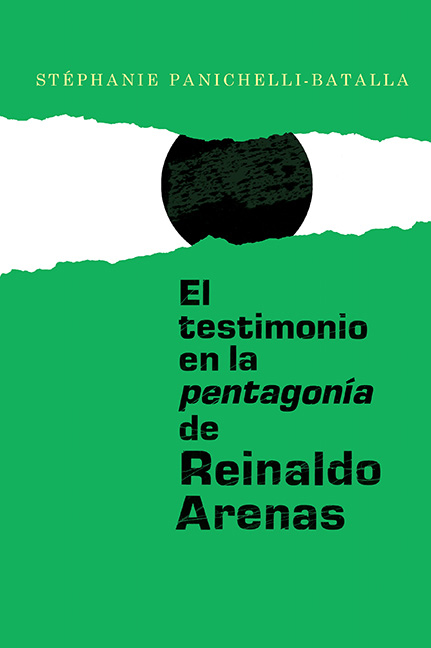Book contents
- Frontmatter
- Dedication
- Contents
- Lista de ilustraciones
- Agradecimientos
- Introducción
- 1 Autobiografía y testimonio
- 2 Reinaldo Arenas: vida y obra
- 3 Celestino y yo
- 4 Huida y rebelićn: El palacio de las blanquísimas mofetas
- 5 Los dobles: Otra vez el mar
- 6 Utopía y carnaval: El color del verano o Nuevo “Jardín de las Delicias”
- 7 Distopía y Liberación: El asalto
- 8 Epílogo
- Bibliografía
- Índice
4 - Huida y rebelićn: El palacio de las blanquísimas mofetas
Published online by Cambridge University Press: 30 March 2017
- Frontmatter
- Dedication
- Contents
- Lista de ilustraciones
- Agradecimientos
- Introducción
- 1 Autobiografía y testimonio
- 2 Reinaldo Arenas: vida y obra
- 3 Celestino y yo
- 4 Huida y rebelićn: El palacio de las blanquísimas mofetas
- 5 Los dobles: Otra vez el mar
- 6 Utopía y carnaval: El color del verano o Nuevo “Jardín de las Delicias”
- 7 Distopía y Liberación: El asalto
- 8 Epílogo
- Bibliografía
- Índice
Summary
El palacio de las blanquísimas mofetas es la segunda novela de la pentagonía, donde el niño narrador de Celestino se ha convertido en el adolescente Fortunato. La familia se ha mudado del campo a la ciudad de Holguín y la historia se sitúa a finales de 1958, poco antes del triunfo de la Revolución. Ya no es una novela a-histórica como lo era Celestino sino que, en este caso, tanto el tiempo como el espacio están claramente establecidos desde las primeras páginas de la obra. La novela nunca se publicó en Cuba porque cuando la escribió, Reinaldo Arenas ya había caído en desgracia a los ojos del Estado cubano.
Peripecias de la novela
Después de Celestino, Arenas escribe El mundo alucinante, la obra que le da prestigio fuera de Cuba y para la que obtiene de nuevo la primera mención del concurso de la UNEAC. Sin embargo, esta vez el premio no conlleva la publicación de 2000 ejemplares, y Arenas decide sacarla al extranjero, donde se publica por Editions du Seuil en Francia. En 1972 sale en Uruguay, con la ayuda de Ángel Rama, el libro de cuentos Con los ojos cerrados, de los que varios se pueden considerar el origen de su siguiente trabajo, El palacio de las blanquísimas mofetas. Comenta Emir Rodríguez Monegal a este propósito:
This novel is not only a continuation of Celestino – it covers his adolescence and coming to age at the time of Fidel's victory- but a development of texts already published as short stories in Con los ojos cerrados. Six if not seven of the eight stories contain material which will be reelaborated later in El palacio. Perhaps Arenas was trying his hand at some specific subjects: the entry of Fidel's army in a boy's small town; the sad fate of Tia Rosa which anticipates that of one of Celestino's aunts in El palacio; Bestial's madness about the flowers which also echoes Celestino's. The book of the short stories (…) could thus be seen as a sort of narrative notebook for the longer and ambitious novel. (“The labyrinthine” 130)
Reinaldo Arenas escribe El palacio entre 1966 y 1969. Al haber caído en desgracia por el envío de su novela anterior al extranjero, esta tampoco se publica en Cuba. Al igual que ocurre con El mundo alucinante, la primera edición es en francés.
- Type
- Chapter
- Information
- El testimonio en la pentagonía de Reinaldo Arenas , pp. 107 - 166Publisher: Boydell & BrewerPrint publication year: 2016



